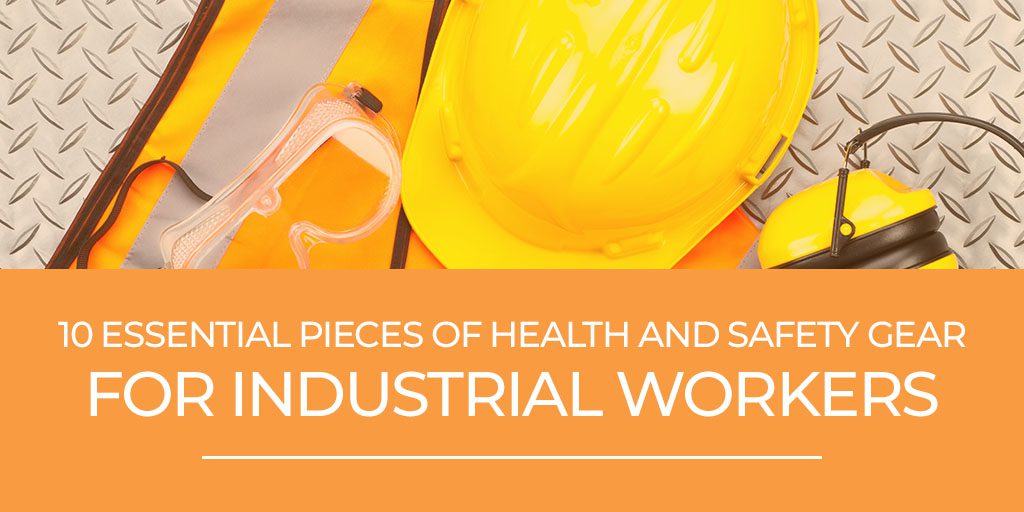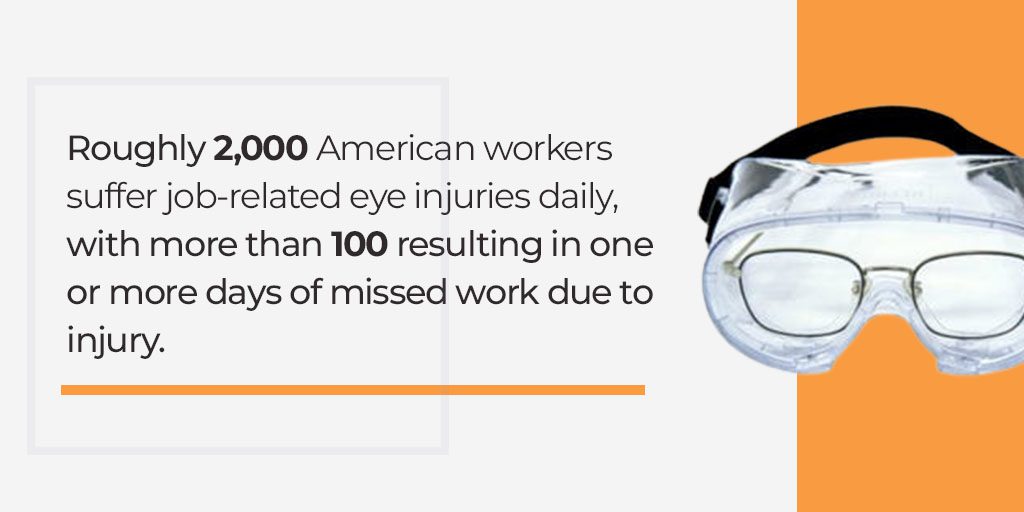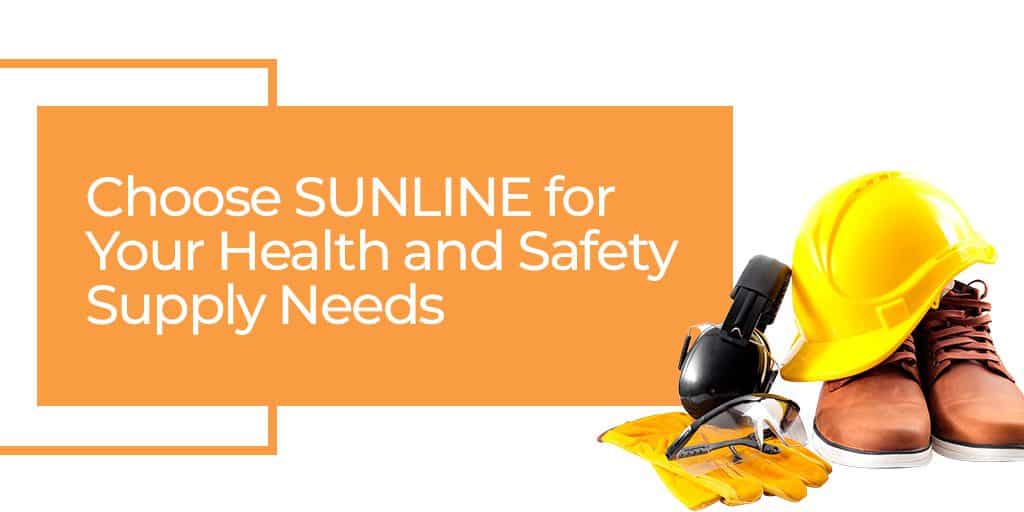
10 Essential Pieces of Health and Safety Gear for Industrial Workers
When it comes to the industrial sector, outfitting your team members with the proper protective equipment is imperative for workplace safety and regulatory compliance and mitigating lapses in productivity due to worker sickness or job site injury. Without providing the proper personal protective equipment for industrial workers, employers run the risk of employee injury and liability and the potential for penalties in the form of fines levied by the Occupational Safety and Health Administration (OSHA).
In this article, we’ll be covering 10 essential pieces of health and safety gear for industrial workers to meet industrial safety guidelines and keep your operation running smoothly.
1. Hard Hats
A staple for industrial safety the world over, hard hats play an essential role in protecting workers from potential head injuries in the workplace and remain a crucial component of industrial safety gear. OSHA determines the necessity of hard hat use with two standards — 29 CFR 1910.135 for general industry workers, and 29 CFR 1926.100 for construction and demolition workers. The different classes of hard hats offer different levels of protection and are an invaluable asset for health and safety equipment.
2. Proper Footwear and Leg Protection
While injuries to the lower body may be overshadowed in workplace health and safety efforts by more serious injuries to the head and neck, the Bureau of Labor Statistics found injuries to the lower extremities — classified as knee, ankle and foot — to be the second most common workplace injuries. These injuries are followed by those to the upper extremities — classified as shoulder, arm, wrist and hand — with approximately 270,000 cases occurring annually, and leading in median days away from work at 12.
The most common forms of safety gear for lower body protection include
- Protective legwear: Common varieties of protective legwear for industrial safety applications include fire and chemical resistant pants and chaps, as well as pants reinforced with durable materials such as Kevlar. Additionally, many safety pants utilize side snaps for quick removal in case of hazard.
- Protective footwear: Footwear is crucial to industrial workplace safety, as proper safety shoes can protect from falling objects, as well as electrical shock and falls due to slips.
- Protective guards: Protective foot and leg guards protect workers from a variety of injuries, with the most commonly used guards being toe, metatarsal and shin guards produced from aluminum, fiberglass or steel.
3. Respiration Protection
In situations where employees are exposed to environments that pose a respiratory threat, breathing equipment is a necessity as part of health and safety equipment, as proper respiration protection prevents injuries in the short and long term. While OSHA requires the elimination of harmful dusts, fumes, gases, etc. by engineering control measures, situations where control measures are not feasible require the use of respirators.

4. Eye Protection
Roughly 2,000 American workers suffer job-related eye injuries daily, with more than 100 resulting in one or more days of missed work due to injury. Adequate eye protection in the form of safety glasses, goggles and face shields prove crucial as industrial safety products, and providing proper eye protection in compliance with OSHA’s General Industry standards as outlined in 29 CFR 1910.132 is the simplest way to avoid worker injury and lost production due to eye injury.
5. Full Body Protection
Full body protection is an equally crucial component for industrial safety, as in many industrial roles full body safety products are a necessity. Whether it’s exposure to paint, chemicals or high heat, comprehensive protection for the full body is vital health and safety gear across numerous fields.
Below are some of the most common examples of instances that require full body protection
- Heat exposure: In roles such as welding and steel production, exposure to extreme heat, flame, sparks and debris are common, and require full-body protection to prevent burns and heat exposure, as well as fire and flame resistant materials.
- Chemical exposure: In laboratory and industrial chemical production settings, full-body protection is imperative for health and safety precautions given the toxicity of the chemicals being produced. Protection is in the form of full body suits capable of preventing particle leakage as well as resistance to tears and abrasions.
- Hazardous waste exposure: Hazardous materials (HAZMAT) workers require varying levels of protective equipment as designated by OSHA based on hazard level. Level A is the highest level of protection and requires a fully encapsulated chemical protective suit, in addition to a self-contained breathing apparatus, chemical resistant gloves and safety boots.
6. Hearing Protection
Hearing protection in the form of noise-reducing ear muffs and ear plugs are essential forms of industrial safety gear for the prevention of noise-induced hearing loss. About 50% of all manufacturing workers have been exposed to hazardous noise, resulting in roughly 20% of all manufacturing workers suffering from hearing difficulty.
7. Gloves and Hand Protection
Proper gloves and hand protection offer safety from a variety of industrial hazards, ranging from cuts and burns to electrical hazards and chemical exposure. Depending on the industrial role, different glove materials, thicknesses and lengths should be used to best meet the protective needs of the employee and health and safety compliance standards.
Common safety considerations for glove selection include
- Hazard identification: Crucial to determining the best industrial safety products across the board, knowing what type of hazard you’ll be protecting against is crucial when selecting safety gloves. Common categories include chemical hazards, thermal or temperature hazards, electrical shock hazards, puncture and sharpness hazards and combination hazards.
- Thickness and material: These elements will likely follow hazard identification, as material considerations and glove thickness will be related to application and protection requirements, as well as dexterity needs.
- Length: Glove sizes can range from covering the hand only to extending up the arm, with the latter variety being ideal for scenarios in which splash or immersion protection is necessary.
8. Proper Clothing
Choosing the proper clothing plays an important role in industrial safety measures, as modern technology has enabled the treatment of fabrics to achieve properties such as chemical, heat and flame resistance. Fabrics that protect from dust and particles are equally important for hazardous applications ranging from chemicals to radiation exposure to prevent inward leakage of toxic substances that present immediate and long-term harm to workers.
9. Work Safety Detectors and Monitors
In addition to the apparel elements vital for industrial work safety, oftentimes additional tools are necessary to fully ensure worker health and safety. Safety equipment devices and hazard monitors provide a necessary level of protection in addition to personal protective equipment (PPE) and proper attire for industrial workers.
Some of these mechanisms include
- Air quality monitors: Indoor air quality monitors come in a variety of styles, with portable, fixed and handheld options available, and function to provide readings of air quality based on present particulate matter and volatile organic compounds (VOCs) that present health concerns.
- Gas and chemical detectors: Similar to air quality monitors, gas and chemical detectors come in a variety of configurations and functions to detect levels of toxic gases and chemicals harmful to employees.
- Radiation detectors: Radiation detectors provide readings that show exposure and concentration of different types of radiation, commonly detecting alpha, beta, gamma and X-rays to alert users of harmful radiation levels.
10. Proper Tools for the Job
Using the proper tools is an equally important component of industrial safety, and should be acknowledged as a vital component of health and safety gear for industrial applications. Common examples include properly insulated tools to prevent the risk of electrical shock and properly maintaining the tools being used to their manual standards.

Choose SUNLINE for Your Health and Safety Supply Needs
Providing the proper protective equipment is essential for ensuring a safe working environment and maintaining regulatory compliance, which ultimately ensures healthy workers and minimal downtime due to workplace accidents.
SUNLINE Supply offers wholesale industrial safety products for your business to keep your operation running smoothly. View our product offerings by industry or browse our general inventory of health and safety gear. If you need something specific for your industry or have any questions about which products best suit your situation and budget, contact our team using our contact form today!

